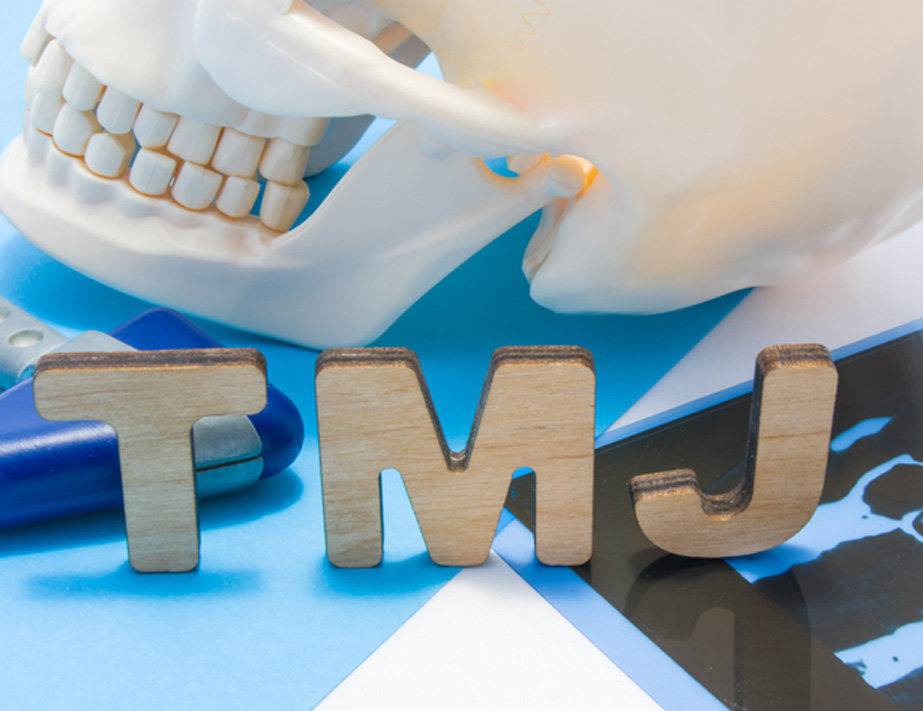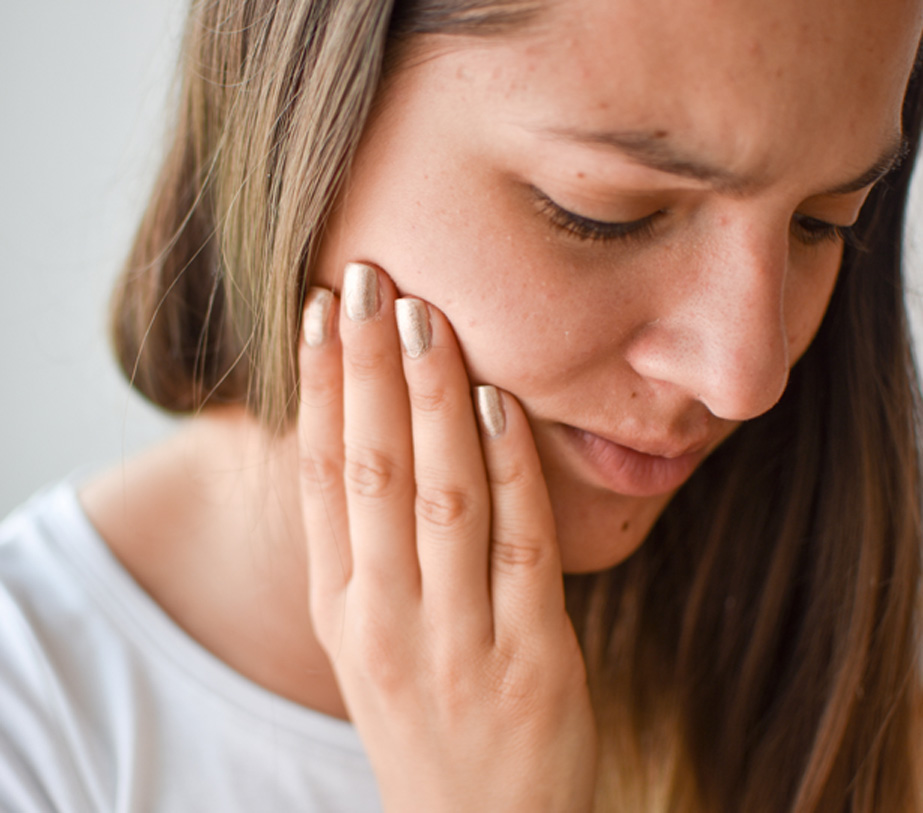
Temporomandibular joint (TMJ) arthropathy is a disorder of the nerves and jaw muscles caused by injury of inflammation to the temporomandibular joint.
The TMJ connects the jawbone and the skull.
An injured or inflamed TMJ may lead to:
- Pain when chewing
- Crackling, clicking and popping of the jaw
- Nerve inflammation
- Headaches, including migraines
- Swelling on the sides of the face
- Tooth grinding
- Eustachian tube dysfunction
- Dislocation of the TMJ
Risk Factors for TMJ Arthropathy
Risk factors for this condition include:
- Poor posture in the neck and upper back muscles, leading to neck strain and abnormalities of jaw muscle function
- Stress, leading to muscle tension and jaw clenching
- Women 18-44 years of age
- Other chronic inflammatory arthritis
- Jaw trauma or poorly positioned teeth
- Having a genetic predisposition to pain sensitivity and increased stress responses
TMJ arthropathy may also be caused by orthodontic braces and excessive gum chewing.


Signs and Symptoms
Signs and symptoms of TMJ arthropathy may include:
- Pain or tenderness in the jaw, especially at the area of the joint
- Popping/clicking of the jaw (crepitus)
- Pain that feels like a toothache
- Earache or cracking sounds in the ears
- Shoulder pain
- Ringing or popping sounds in the ears (tinnitus) or a sense of fullness in the ears
- Headaches, including migraines
- Dizziness or vertigo
- Blurred vision
- Pain, swelling, or a lump in the temple area
- Tight, stiff, or sore jaw or neck muscles
- Muscle spasms in the jaw
- Facial pain, mouth pain, jaw pain, cheek pain, or chin numbness or tingling
- Pain at the base of the tongue
- Difficulty chewing
- Locking or dislocation of the jaw (usually after widely yawning), referred to as lockjaw
Treating TMJ Arthropathy
TMJ arthropathy may be treated with a corticosteroid injection, such as botulinum toxin type A (Botox), into the TMJ. Multiple studies have shown that Botox can significantly decrease pain and increase mouth movements for three months after the procedure. Botox works by partially paralyzing the muscles straining the TMJ.
Botox is an “off-label” treatment for TMJ and is not approved by the FDA. Patients should speak to their doctor to find out if Botox could help treat their TMJ.
Side Effects of a Botox Injection for TMJ
Common side effects include:
- Headache
- Nausea
- Respiratory infection
- Flu-like illness
- Temporary eyelid droop
- Pain
- Redness and/or bruising at the injection site
- Muscle weakness
- “Fixed” smile that could last for six to eight weeks
What to Expect During a TMJ Joint Injection
A Botox injection procedure takes about 10 to 30 minutes and is performed on an outpatient basis. During the session, the doctor will inject Botox into the patient’s forehead, temple and jaw muscles.
Patients are able to return to normal activities the following day.
After the Procedure
Patients may experience relief within a day or two of treatment, however, most patients will need several days. After the procedure, patients should avoid rubbing or massaging the injection sites for several hours after treatment.
Patients can help prevent TMJ syndrome symptoms from recurring by eating soft foods, maintaining proper posture, practicing relaxation techniques to reduce stress and avoiding chewing gum.

